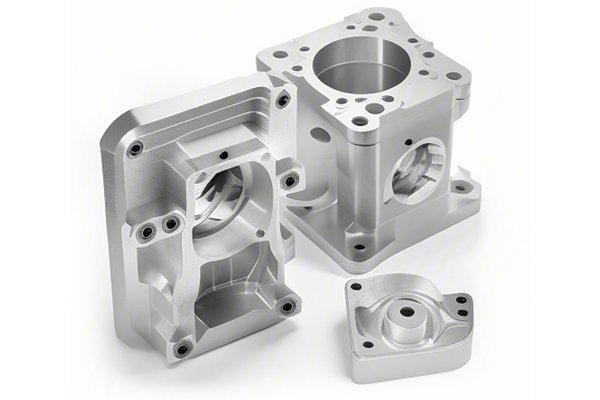Did you know that the global CNC machining market is expected to reach $117 billion by 2026? As industries continue to evolve and demand higher precision components, the importance of CNC machining has never been more pronounced—particularly for materials such as mild steel. In this blog post, we will dive into the world of CNC machining services specifically tailored for mild steel parts. We will cover everything from the basics of CNC machining and the advantages of using mild steel, to detailed applications and best practices, aiming to provide a comprehensive guide for those looking to streamline production and increase efficiency.
What is CNC Machining?
CNC, short for Computer Numerical Control, is an advanced manufacturing technology that utilizes computers to control machine tools. This automation allows for the production of highly accurate and repeatable components, making CNC machining an indispensable tool in modern manufacturing.
Why Mild Steel?
Mild steel, or low carbon steel, is a type of steel defined by its low carbon content, usually less than 0.25%. This characteristic grants it several key benefits:
Benefits of CNC Machining Services for Mild Steel Parts
CNC machining allows for exceptional precision, which is critical when producing parts that need to fit together with tight tolerances. The technology can achieve repeatability within microns, ensuring that every part is exactly the same.
The automation of CNC machinery creates a dramatic uptick in productivity. Parts can be manufactured faster than by traditional methods, which significantly shortens lead times.
CNC machining is designed to minimize material waste. Since the process is highly accurate, less scrap material is generated compared to traditional machining methods.
With CNC technology, complex shapes that would be difficult or impossible to achieve by hand can be easily manufactured. This means more design freedom for engineers and designers.
Once a CNC machine is programmed, it can produce one part or thousands with the same level of quality and precision, ensuring consistency across all components produced in a production run.
CNC machining services can be scaled to meet the needs of small batches for prototyping as well as large production runs, accommodating various project sizes and requirements.
With CNC machining, custom parts can be easily designed and manufactured, offering businesses the flexibility to meet unique specifications that may not be possible with other manufacturing techniques.
Applications of CNC Machining for Mild Steel Parts
Mild steel is commonly used for manufacturing components such as brackets, frames, and chassis in the automotive sector. CNC machining helps produce these parts with the required precision and reliability.

Mild steel parts, including beams and fittings, benefit greatly from CNC machining, providing structural integrity while also allowing for complex designs that can facilitate efficient construction.
Although high-performance materials are often used, CNC machining of mild steel still finds applications in brackets and fasteners where lower weight or cost is a priority.
The production of machinery parts, tools, and fixtures often relies on CNC machining of mild steel due to its robustness and machinability, ensuring that equipment can withstand rigorous industrial environments.
Components such as chassis and internal support structures in appliances like refrigerators and washing machines are often made from mild steel, allowing for effective shapes and durability.
Best Practices for CNC Machining Mild Steel Parts
Selecting appropriate tooling for machining mild steel is essential. Carbide-tipped tools usually provide the best wear resistance and performance for longer runs.
Finding the right cutting speed is vital for efficiency and prolonging tool life. General guidelines suggest a cutting speed between 80-120 feet per minute (24-36 m/min) for mild steel.
Utilizing the appropriate coolant can considerably improve finish and tool life. The type of coolant and method of application would depend on the specific machinist task being performed.
Keeping CNC machinery in excellent condition ensures consistent performance and accuracy. Regular maintenance schedules should be established, along with immediate attention to any irregularities.
Implementing a stringent quality control process at various stages of production can help ensure that the finished parts meet the required specifications.
Invest in comprehensive training for operators to ensure they are skilled in operating CNC machinery effectively and safely.
Challenges and Considerations
While CNC machining offers numerous advantages, it is important to recognize potential challenges:
In conclusion, CNC machining services for mild steel parts present a highly efficient, precise, and cost-effective solution for various industrial applications. By leveraging this advanced manufacturing technology, businesses can not only enhance their production capabilities but also create high-quality, consistent parts tailored to their specific needs.
As industries continue to evolve, the role of CNC machining will become increasingly important. From automotive to construction and beyond, the capability to produce complex structures with precision is invaluable. Understanding the benefits, applications, and best practices of CNC machining for mild steel can help you make informed decisions and stay competitive in today’s rapidly changing manufacturing landscape.
This blog serves as an essential resource for businesses considering CNC machining as a means to boost production. Whether you’re a seasoned operator or just starting, being informed about CNC machining services will allow you to explore new possibilities for growth, efficiency, and innovation. The conversation around modern manufacturing methods like CNC machining is not just relevant; it’s crucial for survival in an ever-competitive market.






